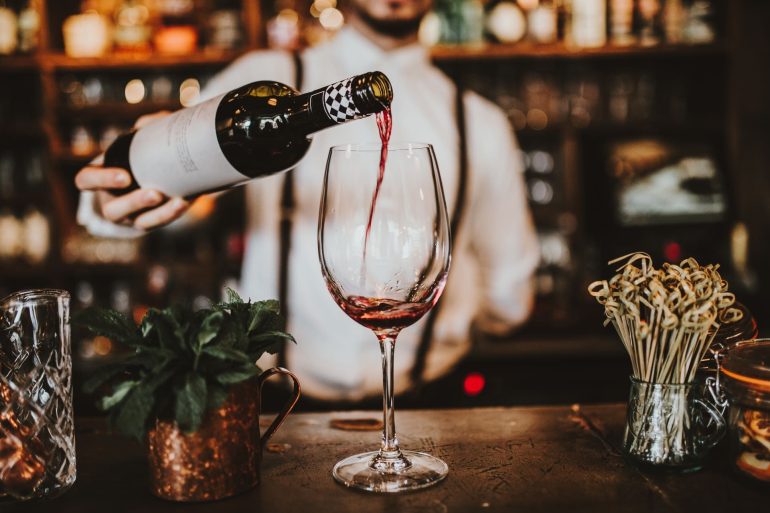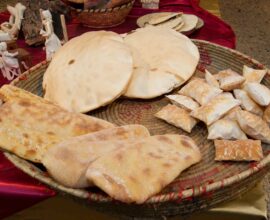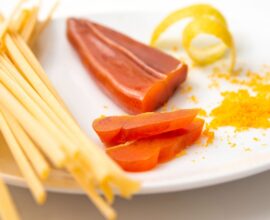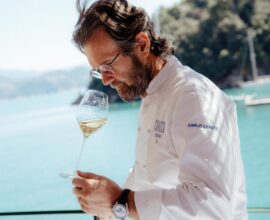Sardinia and wine: a millenary history
Sardinia and wine: from the Nuragic civilization to the present day
The link between Sardinia and wine has its roots in the nuragic era, dating back at least to the fifteenth century B.C, during which the cultivation of Cannonau, the most representative grape of the island and the oldest in the Mediterranean along with Vermentino, was already widespread according to archaeologists, botanists and chemists.
Legend has it that it was Aristeo, son of the god Apollo and the nymph Cyrene, who introduced viticulture to Sardinia along with agriculture and hunting. The mythical founder of Caralis, the ancient toponym of the city of Cagliari, arrived on the island together with Daedalus (author of the majestic Nuraghi according to the ancient Greeks) in the fifteenth century BC, and here he had two sons whose names recall the art of cultivating the land and the vine: Kallikarpos, meaning “the one with the beautiful fruits’ and Charmos, which would derive from the Semitic krmy (winemaker).
There are many native vines of Sardinia, however, the information on the origin of the vine culture in the island until a few years ago was fragmented and confused. Some scholars believed that the Sardinian vine par excellence, or the Cannonau, was introduced to the island by the Phoenicians, while others believed that it came from the Iberian Peninsula and had been imported into Sardinia during the Spanish domination of the 15th and 16th centuries.
The recent archaeological discoveries have refuted both hypotheses, showing that it is endemic cultivation already known at the time of the nuragic civilization: as evidenced by the findings of ancient pips discovered in some archaeological sites of the island, including the nuragic village Duos Nuraghes in Borore, a municipality in the province of Nuoro, and the organic remains of a stone press found in the nuragic village of Monte Zara, not far from the town of Monastir, a few kilometres from Cagliari.
Archaeologists also found numerous Vernaccia and Malvasia grape seeds in perfect condition in the nuragic well of Sa Osa used as a “natural refrigerator” in the countryside of the municipality of Cabras. To these findings should be added the charred grapes recovered in the nuraghi of Adoni, Villanovatulo, Genna Maria, Villanovaforru, and the settlement of Duos Nuraghes in Borore.
Sardinia produces many quality wines, exported all over the world and appreciated for their typical organoleptic characteristics, including Vermentino di Gallura, which can bear the DOGC mark (Denominazione di Origine Controllata e Garantita) and 19 DOC wines (Denomination of Controlled Origin).
What are the best known Sardinian wines in Italy and the world?
Let’s find out together which are the three native vines, red and white most known of Sardinia, which have found their natural habitat on the island:
- Cannonau: the symbol of Sardinian wine culture has mandatory ageing of at least one year and matures for at least six months in oak or chestnut barrels. Cannonau is a wine with a controlled designation of origin, made from 99% Cannonau grapes and the remaining 1% from locally produced grapes. The DOC award is given to Classico and Jerzu riserva, mainly produced in the province of Nuoro, and to Rosso, Riserva and Rosato, typical of the provinces of Cagliari, Nuoro, Oristano and Sassari;
- Vermentino: produced exclusively in the historical region of Gallura, Vermentino DOCG meets high-quality standards and, unlike Vermentino di Sardegna DOC produced in almost the whole island, it has greater flavour, complexity and amiability. It goes perfectly with dishes that have all the taste of the sea and in particular with a great classic recipe of Sardinian cuisine: linguine, clams and bottarga;
- Vernaccia: was the first Sardinian wine recognized as DOC, in 1971, and its name comes from the Latin Vernacula, that is “wine of the place”. Produced in the province of Oristano, Vernaccia has a yellow-amber colour, almost gold, a rich flavour, warm and enveloping, with a bitter aftertaste, and the nose expresses delicate fruity aromas with hints of almond flower. The wine is aged in chestnut or oak barrels kept partly empty and preserved in environments subject to severe temperature changes. The presence of air determines the formation of a veil on the surface of the wine due to particular yeasts that favour the ageing process. It is particularly suitable both as an aperitif wine and as a dessert wine.
Sardinia and wine: where to taste the best wines on the island?
In the Wine Bar of Forte Village, an award-winning resort surrounded by the beautiful of Sardinian sea, you can drink a glass of the best wines on the island and taste high quality Italian and foreign labels.
In addition, guests can discover the best food-wine pairings and the most interesting trends of national and international cuisine, choosing from a range of gourmet and Michelin starred restaurants such as the San Domenico Terrace, managed by Michelin-starred chef Massimiliano Mascia, the Heinz Beck Restaurant and the Cavalieri led by Chef Mocci.
Nestled in an enchanting park of 50 hectares, surrounded by the scents of the uncontaminated nature of the island and one of the most beautiful seas in the world, Forte Village is in one of the most beautiful corners of the southern coast of the island and is the perfect destination for a holiday full of flavour and relaxation.
The luxury resort, ideal for couples, families and groups of friends, is about 45 minutes from the airport of the ancient city of Cagliari and you need an hour of flight from Rome and Milan, an hour and thirty minutes from Paris, two hours from London and Frankfurt and four hours from Moscow to get there.
The hotel complex boasts a unique offer throughout the Mediterranean basin and offers different accommodation solutions able to meet the different needs of guests: from the elegant 8 hotels to five and four stars, to the refined Waterfront Suites, up to 13 luxury villas, a wonderful oasis of privacy and beauty with extra services, such as a butler, chef or chauffeur.
In addition, to allow its guests to have a stay in security, well-being and full of fun, Forte Village has applied a Covid Protection Protocol since June 2020 that in 2021 was further strengthened with the use of the latest generation of antigenic texts.
Do you want to experience a dream holiday full of flavour, wellness and fun in a true paradise? Discover the Forte Village Resort in Sardinia






